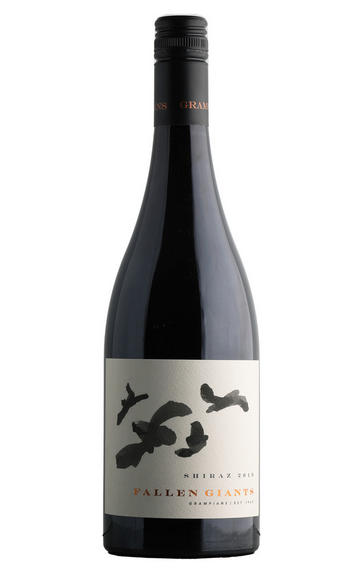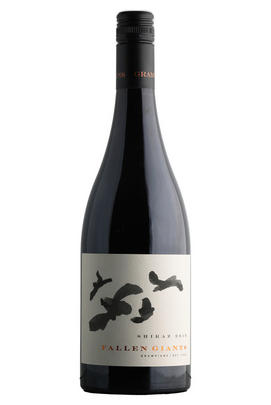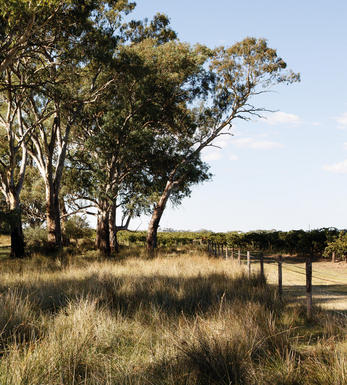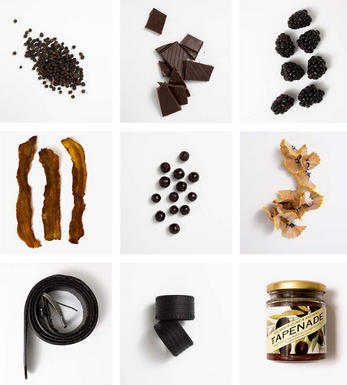
2019 Halls Gap Estate, Fallen Giants Vineyard Shiraz, Grampians, Australia

Critics reviews
Quite a subtle nose but more blackberry jam than black pepper. Some refinement of texture and quite generic, but a bit potent for me!
Drink 2022 - 2026
Jancis Robinson MW, JancisRobinson.com (March 2023)
About this WINE

Halls Gap Estate
The Fallen Giants vineyard was planted in 1969 by a long-term grower for Seppelts & Penfolds (the fruit from here made it into the 1986 Grange). It was purchased by Trevor Mast of Mount Langi Ghiran in the early 1990s and was then bought by Aaron Drummond and his family in 2014.
Aaron is 50% owner of Circe – a winery that Berry Bros. & Rudd works with very closely, (he is also MD of NZ’s Craggy Range as his “day” job). Circe winemaker, Dan Buckle, provided blending advice for the 2013 to 2015 Fallen Giants wines, which were made at Mount Langi Ghiran. Since 2016, the wines have been made by Justin Purser at Best’s Great Western - Halls Gap Estate’s closest neighbour.
The Grampians region was planted in Planted in 1861 and many original vineyards still remain. It is a truly cool climate region with Mean January Temperatures (MJTs) ranging from 18.1?C, to 20.6?C. There are only eight producers in the region, of which three are Langtons classified (Best’s, Mount Langi Ghiran and Seppelts). Six of these eight have the prestigious 5 star rating from Australian wine critic James Halliday - a testament to the quality the region can produce.
James Halliday rated Halls Gap Estate as a 5-star winery in his annual Wine Companion for 2016, 2017 and 2018. He also gave both the 2014 and 2015 Fallen Giants’ Shiraz 95 points.

Victoria
After South Australia and New South Wales, Victoria is the country's third most important viticultural state, responsible for 23% of the vines. Notable fine wine regions include the Yarra Valley (a prime spot for Pinot Noir), Sunbury (Chardonnay, Shiraz), Heathcote (Shiraz), Macedon Ranges and Rutherglen (Liqueur Muscats).
Victoria has a long history of vineyard settlements, although much was destroyed by Phylloxera in the late 19th century. Apart from hot Rutherglen, the Victorian viticultural regions are generally the country's second coolest after Tasmania.
Victoria is the source of excellent sparkling wines, as well as being a great area for sweet, fortified wines such as liqueur Muscat from Rutherglen in north-east Victoria.

Syrah/Shiraz
A noble black grape variety grown particularly in the Northern Rhône where it produces the great red wines of Hermitage, Cote Rôtie and Cornas, and in Australia where it produces wines of startling depth and intensity. Reasonably low yields are a crucial factor for quality as is picking at optimum ripeness. Its heartland, Hermitage and Côte Rôtie, consists of 270 hectares of steeply terraced vineyards producing wines that brim with pepper, spices, tar and black treacle when young. After 5-10 years they become smooth and velvety with pronounced fruit characteristics of damsons, raspberries, blackcurrants and loganberries.
It is now grown extensively in the Southern Rhône where it is blended with Grenache and Mourvèdre to produce the great red wines of Châteauneuf du Pape and Gigondas amongst others. Its spiritual home in Australia is the Barossa Valley, where there are plantings dating as far back as 1860. Australian Shiraz tends to be sweeter than its Northern Rhône counterpart and the best examples are redolent of new leather, dark chocolate, liquorice, and prunes and display a blackcurrant lusciousness.
South African producers such as Eben Sadie are now producing world- class Shiraz wines that represent astonishing value for money.


Buying options
Add to wishlist
Description
Quite a subtle nose but more blackberry jam than black pepper. Some refinement of texture and quite generic, but a bit potent for me!
Drink 2022 - 2026
Jancis Robinson MW, JancisRobinson.com (March 2023)
wine at a glance
Delivery and quality guarantee